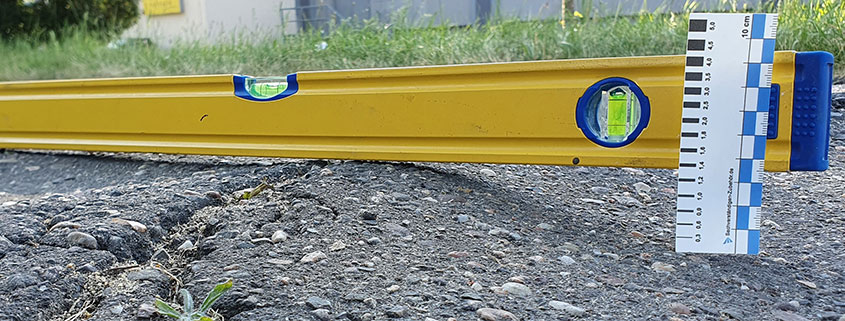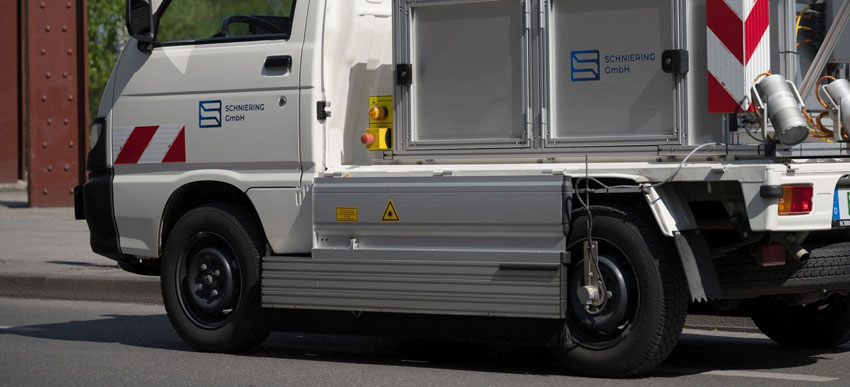Evenness measurements cycle path
According to the technical test specifications for evenness measurements on road surfaces of the FGSV (Road and Transportation Research Association), evenness is a user-relevant surface property of a road and is co-determinant for both the utility value and the asset value. These statements can be transferred to the cycle path without any restrictions.
Specifically, the following factors can be derived from the evenness:
- the safety and comfort for the cycle path user
- the condition of cycle paths in general
- the accounting value for the owner of the public easement
The procedure for determining the evenness of cycle paths within the scope of a condition monitoring and assessment is currently not defined in any set of regulations. This evenness can be determined by so-called “contact measurements”, e.g. by means of a straightedge, or by “non-contact measurements” with the help of sensors on a measuring vehicle. Compared to contact measurement, non-contact measurement offers significant advantages.
For example:
- the data will be collected much faster and more accurately as well as objectively
- the measured values are recorded continuously and not only randomly
- no safety measures or barriers are required on the cycle paths due to the fast-moving measuring vehicles.
Due to the small track width of a bicycle tyre, the longitudinal evenness of a cycle track is the essential parameter for assessing evenness. This longitudinal evenness is measured by Schniering GmbH with the ARGUS®-Agil measuring system in both the left and right rolling lanes of the vehicle. The focus is particularly on short-wave influences such as those caused by root ingrowth and the associated heave.
The longitudinal evenness measurements are carried out without contact by means of laser distance sensors. Four distance sensors are used on each side of the vehicle, which are mounted on a rigid beam at a fixed distance. Lasers are used which work according to the triangulation method and have a high accuracy with simultaneously high clock rates and a corresponding measuring range.
Measuring principle evenness in longitudinal profile [Source: TP Eben – Berührungslose Messungen]
In order to be able to quantify the longitudinal evenness, the weighted longitudinal profile (WLP), the unevenness measure (AUN), the waviness (W), the longitudinal evenness index (LWI) or also the International Roughness Index (IRI) are calculated from the recorded measured values. These key figures, together with the determined variables of the surface condition, are then included in the overall assessment of the condition of the cycle path via a defined weighting.




